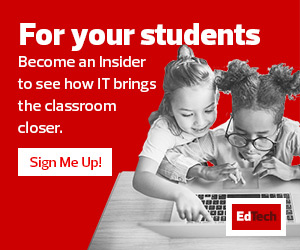What Does Technology in The Classroom Look Like Today?
Technology integration is the use of technology in teaching and learning to achieve academic goals.
“I don’t use tech unless it solves a problem I have in the classroom,” says Lisa Highfill, a technology integration specialist at Pleasanton Virtual Academy in California.
For example, Highfill says, she’ll use a Jamboard where students can post their responses instead of calling on them one at a time. “Then, when they’re all quiet, what are they doing? They’re reading each other’s comments.”
Meaningful tech integration should be done thoughtfully to enhance a learning experience. “You don’t want to use technology just for technology’s sake,” says Melissa Lim, a technology integration specialist at Oregon’s Portland Public Schools. “We recommend using the Triple E Framework as a simple tool to help determine if it’s worth using technology or if you’re just using it as a substitute.”
The Triple E Framework was developed by Liz Kolb, a clinical associate professor of education and learning technologies at the University of Michigan. When K–12 IT leaders evaluate new tech based on this framework, they can determine “how well technology tools integrated into lessons are helping students engage in, enhance and extend learning goals,” according to Kolb’s website for the framework.
“It’s all about the learning first,” Lim says.
Why Is Integrating Technology Important in Education?
Technology integration in Education is important for multiple reasons. It makes learning more equitable for K–12 students, and — when used in lower grades — it sets them up for success in school and, moving forward, in their careers.
“If you’re a teacher who doesn’t use a lot of technology, your students aren’t getting equitable access to learning experiences that another teacher who uses technology is giving to their students,” Lim says.












